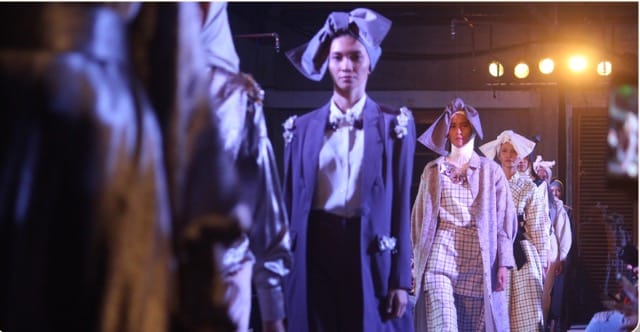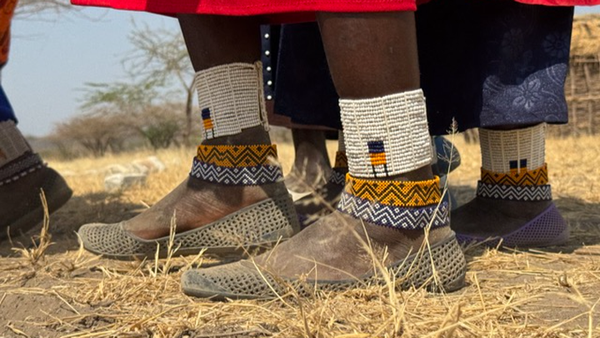Sustainability, Diversity and Inclusion: On the Intersectionality of Fashion’s Environmental Problem
As another London Fashion Week draws to a close, I reflect on the wise words of experts trying to make a difference in the industry.

Access the Audio Read version of this article directly on Spotify for Podcasters.
I’ve been spending a lot of time getting educated on sustainability, climate change, diversity and inclusion, and their intersectionality in the past year, particularly within the fashion industry. And it has made me realise that what I know about it is just the tip of the iceberg. I’m now increasingly questioning the systems upholding this industry - moving from one piece of content to another, from one hurdle to another, making me feel quite lost and overwhelmed at times.
Why are experts taken less seriously than influencers, and why are eco-friendly solutions progressing so slowly? Why are we still dumping clothes in the poorest regions of the world, and letting their communities carry that burden? How does colonisation fit into all of this, from the working conditions of workers to environmental issues?
The deeper you dive into the fashion industry’s shortcomings, the more problems you dig out. But part of the issue when it comes to discussing sustainability is a lack of emphasis on the actors, solutions and wins that already exist.
With green investments increasing and taking an interest in fashion, it’s key to approach solutions improving fashion’s broken systems with intersectionality in mind. Its problems can’t be fixed if we approach them from a single lens, and a look back at our global history is necessary to understand the exact scale of suffering hiding behind an industry valued at US$1.7 trillion in 2022.
None of this is getting easier when you also realise that the term ‘sustainability’ has been misused and greenwashed by leaders in the fashion industry over the years, in the hope to appease and appeal to its consumer base. So are ‘diversity’ and ‘inclusion’.
The fashion industry needs a reminder that it wouldn’t exist without the labour and creations of marginalised communities, without their culture, fabrics and craftsmanship, and without their literal blood, sweat and tears.
And a better future wouldn’t be an option without the innovation and tenacity of the people trying to reduce the social and environmental costs of the fashion industry. As London Fashion Week just ended this week, it made me want to dive back into some of the wise words shared by experts and contributors in the field over the past two years, whom we had the pleasure to interview or commission.
Aja Barber, a writer, stylist and consultant focusing on the intersections of sustainability, fashion, and the textile industry, is also the author behind 'Consumed. The Need For Collective Change: On Colonialism, Climate Change & Consumerism’. In her interview with our publication back in October 2021, Aja explained that “if fashion was something that was celebrated by a majority of cis het white male population, people would take it and its impact more seriously, but because it’s largely associated with women and queer people, people tend to treat fashion as if it’s not so impactful and it’s not as serious - but in reality, it is responsible for a percentage of the carbon dioxide problem we’re facing.” The same can be said about the pink tax, the gender gap, and so many more aspects of the lives of women, LGBTQIA+ people and other marginalised communities.
Victoria Jenkins, founder of the sustainable adaptive fashion label ‘Unhidden Clothing’, who presented at London Fashion Week 2023, wants to make the fashion industry truly inclusive - and that means including people with disabilities everywhere, and not just on one picture for the sake of showing themselves as a diverse brand. She shared in a previous interview with us, “I wish they [fashion brands] would turn all their resources to be a force for good change. They have all the industry contacts anyone could ever need to be sustainable, change their supply chain, offset emissions, make less, and by doing so convert their existing customers to sustainable shoppers. I wish they would be truly inclusive - the use of the word ‘inclusive’ by brands that are anything but makes me so, so angry. If you aren’t representing and actually including every marginalised group, then stop using the word inclusive.” Indeed, until we see BIPOC people and people with disabilities represented in all layers of the industry, calling your brand diverse and inclusive only shows that you don’t truly value and respect those communities.
Journalist Taiwo Balogun wrote in her article ‘10 Black Influencers and Brands Transforming the Sustainability Niche’ that “to effectively build a better world for everyone, we must be prepared to listen to the voices of Black, Indigenous, and other people of colour who are advocating for environmental justice and support their brands – especially the ones that put the environment, ethics, and sustainability at the forefront of their business.” There are plenty of people from the global majority who advocate for climate change and sustainable solutions in the industry, but they’re not getting the representation they deserve from the mainstream media. After all, the fight for the environment hasn’t started with white people: it was a part of our ancestors’ lives for generations. It has always existed within our communities but has been appropriated by Western countries when they saw an opportunity to profit off them. In particular, we must honour indigenous communities globally, and the ones who have risked their lives to protect our planet. They are the founders of environmentalism. (Read the full article: )
Meanwhile, freelance journalist Anmol Irfan explained in ‘Is Sustainable Fashion the Future in Pakistan?’ that “Pakistan has a long history with long-lasting garments, and what needs to be better promoted in the Pakistani fashion industry is the idea of timeless pieces that stay relevant while standing the test of time. With the added bonus that in the long run, slow fashion choices end up being more cost effective.” And it’s not an isolated idea. Think about all the ways the industry tries to lure us into buying more. We’ve all succumbed to it, and it’s only with time that I’ve learnt to appreciate and value what I wear. I love the idea of an item being passed down from one generation to the next - because there’s so much love and beauty in the tradition; and with the resurgence of DIY and circular economy in the West, it’s a relief to see some businesses putting this idea at the centre of their business model.
As culture writer Bashirat Oladele wrote in 'Woke-Washing: When Anti-Racism and Sustainability Become a PR Stunt': "It must be said that the eco-friendly movement has also been one dimensional for too long when it must be intersectional: it’s way too easy to shame working class people, Black and people of colour and plus sized women buying from fast fashion brands. Accessibility and affordability play a huge factor in buying choices.” Sustainability doesn’t exist without affordability, accessibility, and inclusive design, nor does it exist without the talent of BIPOC and disabled creators - they’re all intertwined and part of the same goal.
There are plenty of resources that can help us understand how the flawed systems behind the fashion industry impact communities and the planet. Organisations such as Slow Factory, Fashion Roundtable, The Or Foundation, Fashion Minority Alliance, Fashion For Good, and Fashion Revolution are good places to start your sustainable living and slow fashion educational journey.





